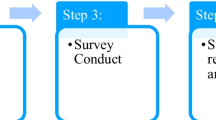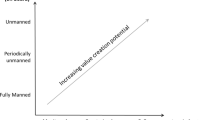Abstract
Autonomous shipping has been on the agenda of the shipping industry for the last decade, and is now closer to becoming a reality more than ever. Although it is technically possible to automate ships with the developments in autonomous technologies of recent years, the effective use of Maritime Autonomous Surface Ships (MASS) depends on meeting the specific operational needs of shipping. Furthermore, autonomous ships must provide significant economic, environmental, safety, and interoperability advantages for a transition to autonomy to be feasible. This study provides a detailed assessment of the operational improvements, possible impacts, and problems that may arise in the shipping industry with the advent of MASS. In addition to this, we assess the processes that would ensure the realization of autonomous ship–port interoperability. In this context, the study discusses the transition to MASS, taking a variety of factors into account, including the acceptability of MASS, benefits and economic impacts of the transition for the shipping industry, the adaptation of vessel types, MASS–port operational interactions (considering various aspects of port operations), and the role of port authorities. Data were collected using a detailed questionnaire distributed to relevant maritime industry stakeholders. The results of this study highlight the navigational issues facing port areas, and the challenges regarding MASS–port interactions during cargo operations. The findings of this research are expected to assist efforts of successfully implementing autonomous systems in the maritime transport chain.
Similar content being viewed by others
Notes
Since the integration of autonomous systems is a new topic in the field of maritime transport, the R&D process has not been completed yet. Therefore, the participation of research institutes and academics in the survey was much higher than other occupational groups. In addition, research institutes include employees of marine technology and the R&D departments of ports.
References
AEGIS. 2021. Advanced, efficient and green intermodal systems 2020. https://moses-h2020.eu/. Accessed 12 Feb 2021
Autonomous Ships HQ. 2021. ReVolt 2017. https://www.autonomousshipshq.com/revolt/. Accessed 12 Feb 2021.
AUTOSHIP. 2021. Autonomous shipping initiative for European waters 2020. https://www.autoship-project.eu/. Accessed 12 Feb 2021.
Beighton, Rochelle. 2021. World's first crewless, zero emissions cargo ship will set sail in Norway 2021. https://edition.cnn.com/2021/08/25/world/yara-birkeland-norway-crewless-container-ship-spc-intl/index.html. Accessed 12 Sept 2021.
Bureau Veritas. 2021. Autonomous Ships 2018. https://marine-offshore.bureauveritas.com/insight/autonomous-ships. Accessed 20 Aug 2021..
Burmeister, Hans-Christoph., Wilko Bruhn, Ørnulf Jan Rødseth, and Thomas Porathe. 2014. Autonomous unmanned merchant vessel and its contribution towards the e-Navigation implementation: The MUNIN perspective. International Journal of e-Navigation and Maritime Economy 1: 1–13.
Canbulat, Onder, Murat Aymelek, Osman Turan, and Evangelos Boulougouris. 2019. An application of BBNs on the integrated energy efficiency of ship–port interface: A dry bulk shipping case. Maritime Policy & Management 46 (7): 845–865.
Friborg, Oddgeir, Monica Martinussen, and Jan H. Rosenvinge. 2006. Likert-based vs. semantic differential-based scorings of positive psychological constructs: A psychometric comparison of two versions of a scale measuring resilience. Personality and Individual Differences 40 (5): 873–884.
Ghaderi, Hadi. 2020. Wider implications of autonomous vessels for the maritime industry: mapping the unprecedented challenges. Amsterdam: Elsevier.
Hogg, Trudi, and Samrat Ghosh. 2016. Autonomous merchant vessels: Examination of factors that impact the effective implementation of unmanned ships. Australian Journal of Maritime & Ocean Affairs 8 (3): 206–222.
Im, Illkyun, Dongryeol Shin, and Jongpil Jeong. 2018. Components for smart autonomous ship architecture based on intelligent information technology. Procedia Computer Science 134: 91–98.
IMO. 2017. Report of the Maritime Safety Committee on Its Ninety-Eighth Session. MSC 98/23.
Jadhav, Akshay, and Sonia Mutreja. 2020. Autonomous Ship Market Research Report. Allied Market Research.
Jeong, Shinkyu, and Hyunyul Kim. 2013. Development of an efficient hull form design exploration framework. Mathematical Problems in Engineering no. 2013.
Jokioinen, Esa. 2016. Remote and autonomous ships the next step. Rolls-Royce.
Karlis, Thanasis. 2018. Maritime law issues related to the operation of unmanned autonomous cargo ships. WMU Journal of Maritime Affairs 17 (1): 119–128.
Kavallieratos, Georgios, Sokratis Katsikas, and Vasileios Gkioulos. 2018. Cyber-attacks against the autonomous ship. In Computer Security, 20–36. Springer.
Kim, Mingyu, Tae-Hwan. Joung, Byongug Jeong, and Han-Seon. Park. 2020. Autonomous shipping and its impact on regulations, technologies, and industries. Journal of International Maritime Safety, Environmental Affairs, and Shipping 4 (2): 17–25.
Komianos, Aristotelis. 2018. The autonomous shipping era. operational, regulatory, and quality challenges. TransNav International Journal on Marine Navigation and Safety of Sea Transportation. https://doi.org/10.12716/1001.12.02.15.
Kongsberg. 2021. Autonomous ship project, key facts about Yara Birkeland 2021. https://www.kongsberg.com/maritime/support/themes/autonomous-ship-project-key-facts-about-yara-birkeland/. Accessed 11 Feb 2021.
Kretschmann, Lutz, Hans-Christoph. Burmeister, and Carlos Jahn. 2017. Analyzing the economic benefit of unmanned autonomous ships: An exploratory cost-comparison between an autonomous and a conventional bulk carrier. Research in Transportation Business & Management 25: 76–86.
Lloyd's Register. 2021. LR defines 'autonomy levels' for ship design and operation. 2016. https://www.lr.org/en/latest-news/lr-defines-autonomy-levels-for-ship-design-and-operation/. Accessed 11 Apr 2021.
Lund, Mass Soldal, Jørgen Emil Gulland, Odd Sveinung Hareide, and Karl Olav Carlsson Weum. 2018. Integrity of integrated navigation systems. Paper read at 2018 IEEE Conference on Communications and Network Security (CNS).
Mallam, Steven C., Salman Nazir, and Amit Sharma. 2020. The human element in future maritime operations–perceived impact of autonomous shipping. Ergonomics 63 (3): 334–345.
massterly. 2021. Making autonomy a reality 2021. https://www.massterly.com/. Accessed 12 Feb 2021
MOL. 2018. The challenge of autonomous ships in the future - MOL conducts onboard test of new technology with Rolls Royce -joint research of intelligence awareness system using a ferry plying the Seto Inland Sea-. MOL Mitsui O.S.K. Lines.
MOSES. 2021. Automated vessels and supply chain optimisation for sustainable short sea shipping 2020. https://moses-h2020.eu/. Accessed 12 Feb 2021
Munim, Ziaul Haque. 2019. Autonomous ships: a review, innovative applications and future maritime business models. Paper read at Supply Chain Forum: An International Journal.
Offshore Energy. 2017. Unmanned Cargo Ship Development Alliance Launched in Shanghai. Offshore Energy.
Porathe, Thomas, Åsa Snilstveit Hoem, Ørnulf Jan Rødseth, Kay Endre Fjørtoft, and Stig Ole Johnsen. 2018. At least as safe as manned shipping? Autonomous shipping, safety and “human error”. Safety and Reliability–Safe Societies in a Changing World. Proceedings of ESREL 2018, June 17–21, 2018, Trondheim, Norway.
Porathe, Thomas, Johannes Prison, and Yemao Man. 2014. Situation awareness in remote control centres for unmanned ships. Paper read at Proceedings of Human Factors in Ship Design & Operation, 26–27 February 2014, London, UK.
Ramos, Marilia A, IB Utne, and A Mosleh. 2018. On factors affecting autonomous ships operators performance in a Shore Control Center. Proceedings of the 14th Probabilistic Safety Assessment and Management, Los Angeles, CA, USA:16–21.
Ren, Huilin, Yu. Ding, and Congbiao Sui. 2019. Influence of EEDI (Energy Efficiency Design Index) on ship–engine–propeller matching. Journal of Marine Science and Engineering 7 (12): 425.
Ringbom, Henrik. 2019. Regulating autonomous ships—Concepts, challenges and precedents. Ocean Development & International Law 50 (2–3): 141–169.
Robert Allan. 2021. Remotely operated vessels 2020. https://ral.ca/designs/remotely-operated-vessels-top/. Accessed 12 Feb 2021
Rødseth, Ørnulf Jan. 2019. Defining ship autonomy by characteristic factors. Paper read at Proceedings of the 1st International Conference on Maritime Autonomous Surface Ships.
Rødseth, Ørnulf Jan, and Hans-Christoph Burmeister. 2012. Developments toward the unmanned ship. Paper read at Proceedings of International Symposium Information on Ships–ISIS.
Rolls-Royce Ship Intelligence. 2016. Autonomous ships - the next step. Rolls-Royce Marine.
Tam, Kimberly, and Kevin Jones. 2018. Cyber-risk assessment for autonomous ships. Paper read at 2018 International Conference on Cyber Security and Protection of Digital Services (Cyber Security).
Tvete, Hans Anton. 2021. The Revolt—A new inspirational ship concept 2013. https://www.dnv.com/technology-innovation/revolt/index.html. Accessed 25 Apr 2021.
Utne, Ingrid Bouwer, Børge. Rokseth, Asgeir J. Sørensen, and Jan Erik Vinnem. 2020. Towards supervisory risk control of autonomous ships. Reliability Engineering & System Safety 196: 106757.
Van Den Boogaard, Maurits, Andreas Feys, Mike Overbeek, Joan Le Poole, and Robert Hekkenberg. 2016. Control concepts for navigation of autonomous ships in ports. Paper read at Proceedings of the tenth symposium high-performance marine vehicles.
Vojković, Goran, and Melita Milenković. 2020. Autonomous ships and legal authorities of the ship master. Case Studies on Transport Policy 8 (2): 333–340.
Wróbel, Krzysztof, Jakub Montewka, and Pentti Kujala. 2017. Towards the assessment of potential impact of unmanned vessels on maritime transportation safety. Reliability Engineering & System Safety 165: 155–169.
Yara. 2021. Yara Birkeland status—November 2020 2020 [cited 11.02. 2021]. Available from https://www.yara.com/news-and-media/press-kits/yara-birkeland-press-kit/.
Acknowledgements
This study was supported by the İzmir Kâtip Çelebi University, Scientific Research Projects Coordination Unit, under Project Number: 2021-GAP-GIDF-0004.
Author information
Authors and Affiliations
Corresponding author
Additional information
Publisher’s Note
Springer Nature remains neutral with regard to jurisdictional claims in published maps and institutional affiliations.
Rights and permissions
About this article
Cite this article
Kurt, I., Aymelek, M. Operational and economic advantages of autonomous ships and their perceived impacts on port operations. Marit Econ Logist 24, 302–326 (2022). https://doi.org/10.1057/s41278-022-00213-1
Accepted:
Published:
Issue Date:
DOI: https://doi.org/10.1057/s41278-022-00213-1













